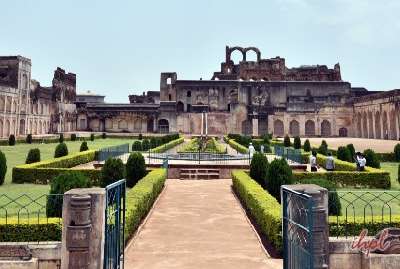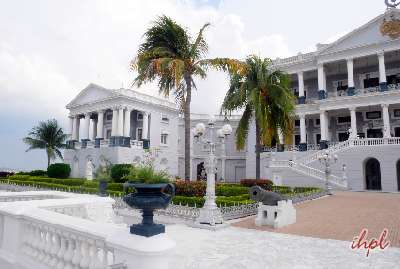India is recognized for many things, its culture, heritage, folklore, food, and dance forms. Coming from every state, India is known for its variety of dance forms all around the world. These Indian folk dances are joyful festivities performed on various occasions like fairs, festivals, and more to welcome nothing but positive spirits. The folk dances in Andhra Pradesh are rich traditional art forms offering immense entertainment and drama for a certain period in history.
In addition, there are two major types of folk dance forms - one is based on pure rhythmic forms (contains an instrument), and the other is couples dance depicting a story with narration. To find out more, read below about the famous dance forms in Andhra Pradesh.
Here are the major dance forms of Andhra Pradesh you might want to groove on!
-
Veera Natyam
Veera Natyam dance form of Andhra Pradesh is one of the ancient dance forms. It is also known as Veera Bhadra as people believe Lord Shiva, during the humiliation of his wife Sati Devi, took out his hair strand called 'Jatajuta' and created Veerabhadra. During the Veera Natyam dance, the dancers connect themselves with long, sharp braided ropes and insert sharp-edged instruments through their cheeks, lips, and tongue. They praise Lord Shiva as part of the Veera Saiva rituals, but today, it is taken out of context and presented as a discrete dance form.
-
Kuchipudi
Kuchipudi is the classical dance form of Andhra Pradesh. Siddhendra Yogi started it in the 17th century as a part of the Bhakti movement. Kuchipudi dance steps are presented with a lot of grace, hand gestures, song, speech, and elegance. Also, Kuchipudi dancers have mastery over music, language, acting, texts, and dancing. While performing, the males wear Angivastra called Bagalbandi, or dhoti, while the females wear a sari with light makeup as a part of the traditional Kuchipudi costume.
-
Gobbi Folk Dance
Another one of the dance forms in Andhra Pradesh is the Gobbi folk dance. It is performed during the festivals of Bhogi and Makar Sankranti. The village girls dance in a circular path around the floral rangoli to celebrate the beginning of spring. Also, tiny round balls made out of cow dung called Gobbillu in Telugu are put on top of the rangoli made with marigolds and pumpkin seeds, and kumkum is smeared on Gobbillu. In some places across the state, a small idol of Lord Krishna is also kept in the middle of rangoli, and songs are sung to praise the Lord.
-
Kolattam Folk Dance
Telugu people love to dance to this folk dance form of Andhra Pradesh. Students usually perform it in school culture programs with a prop of wooden sticks in hand. It is much like the dandiya of Gujarat. Apart from this, the traditional Kolattam dance is a harvest festival performed by both men and women. The dancers artistically braid the hair with ropes, which are attached to the ceiling at one end and to the sticks at the other end. Kolattam dance costume is called the Parikini Vani or Parikini Jackattu, which is a sari worn by folk women.
-
Mathuri Folk Dance
Mathuri Dance of Andhra Pradesh is a tribal dance form typically carried out by tribes called Mathuris in the Adilabad district, Telangana. As the Mathuri tribes migrated from Uttar Pradesh, therefore, Mathuri folk dance somewhat seems like Raslila of Uttar Pradesh. Both men and women perform this dance on Sri Krishna Jayanti in the Hindu month of Sravan. Dancers wear beautiful dresses, and while the male dancers make a beat from small sticks, the female singers create graceful hand gestures and clap rhythmically.
-
Garagalu
Also known as Garika or Veta Natyam, Garagalu is a famous folk dance of Andhra Pradesh presented by keeping Garaga, an earthenware, on top of the head. This Garaga is an important part of the wedding celebrations as it symbolizes the amalgamation of earth, water, and sed. The village pujari or priest moves around with the earthenware on his head, and devotees pit rice, curd, and other eatables to fulfill their oath.
-
Dhimsa Folk Dance
Dhimsa dance is a popular tribal dance of Andhra Pradesh and is performed by tribes like Valmikis, Konds, and Bagatas. It is an ethnic dance form of these tribes performed in local fairs and festivals. In this dance form, a group of dancers forms a chain by holding their hands and moving in a zigzag manner. Also, musical instruments like Dappu, Mori, Tudumu, Kiridi are used. They wear saris and ornaments and knot their hair with a colorful flower on top.
Other dance folk dances of Andhra Pradesh
-
Butta Bommalu Dance
Performed in the Tanaku town of West Godavari district, Butta Bommalu dance is a fashionable dance style of Andhra Pradesh. Each dancer has to wear a dissimilar mask over their head and shoulder in this dance form.
-
Bathukamma Dance
Female dancers typically perform this dance during the Bathukamma festival in Andhra Pradesh.
Bonalu is a dance form of Andhra Pradesh performed by females keeping a pot on their heads.















